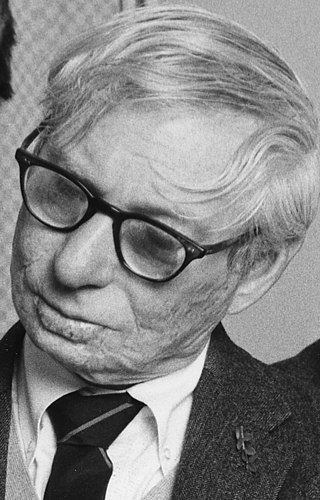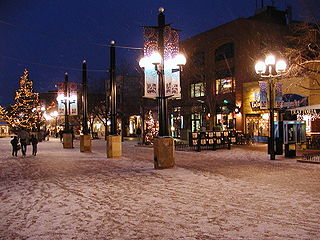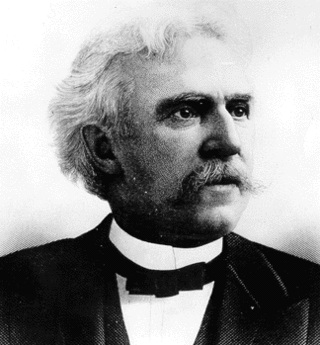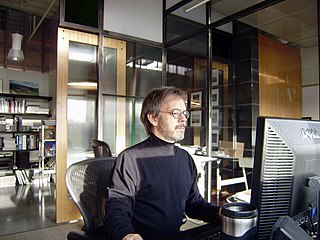
Frank Lloyd Wright Sr. was an American architect, designer, writer, and educator. He designed more than 1,000 structures over a creative period of 70 years. Wright played a key role in the architectural movements of the twentieth century, influencing architects worldwide through his works and hundreds of apprentices in his Taliesin Fellowship. Wright believed in designing in harmony with humanity and the environment, a philosophy he called organic architecture. This philosophy was exemplified in Fallingwater (1935), which has been called "the best all-time work of American architecture".

Louis Isadore Kahn was an Estonian-born American architect based in Philadelphia. After working in various capacities for several firms in Philadelphia, he founded his own atelier in 1935. While continuing his private practice, he served as a design critic and professor of architecture at Yale School of Architecture from 1947 to 1957. From 1957 until his death, he was a professor of architecture at the School of Design at the University of Pennsylvania.

Gunnar Birkerts was a Latvian American architect who, for most of his career, was based in the metropolitan area of Detroit, Michigan.

Hideo Sasaki was a Japanese American landscape architect.

Elijah E. Myers was a leading architect of government buildings in the latter half of the 19th century, and the only architect to design the capitol buildings of three U.S. states, the Michigan State Capitol, the Texas State Capitol, and the Colorado State Capitol. He also designed buildings in Mexico and Brazil. Myers' designs favored Victorian Gothic and Neo-Classical styles, but he worked in other styles as well.

Eugene Sternberg was a Hungarian-born American architect known for his passionate commitment and contribution to contemporary/modernist architecture and town planning in Colorado and other Rocky Mountain states between 1950 and 1990. He designed over 400 building projects and subdivisions, many of them iconic examples of Modernist architecture. Since his focus was on improving the quality of life of the general population, the structures he built were beautiful, useful, and cost-effective. Most of his projects were in the category of social architecture: affordable homes, senior housing projects, public housing, hospitals, medical clinics, public schools, community colleges, community centers, churches, buildings for credit unions, labor unions, and headquarters offices for Rural Electric Associations. As a planner Sternberg designed a number of innovative housing subdivisions and master plans for college campuses, governmental complexes, county fairgrounds, and a number of small western cities.

Fentress Architects is an international design firm known for large-scale public architecture such as airports, museums, university buildings, convention centers, laboratories, and high-rise office towers. Some of the buildings for which the firm is best known include Denver International Airport (1995), the modernized Tom Bradley International Terminal at LAX (2013), the National Museum of the Marine Corps near Quantico, Virginia (2005), and the Green Square Complex in Raleigh, North Carolina (2012).

Alan B. Ford, FAIA, is an American architect and author best known for his work on K-12 sustainable schools.

The Goetsch–Winckler House is a building that was designed by Frank Lloyd Wright, built in 1940. It is located at 2410 Hulett Road, Okemos, Michigan. The house is an example of Wright's later Usonian architectural style, and it is considered to be one of the most elegant. The house was added to the National Register of Historic Places in 1995 and is #95001423.
Henrik Helkand Bull was a founder of Bull Stockwell Allen / BSA Architects in San Francisco in 1967.
Edward Divine White Jr., FAIA, was an architect based in Denver, Colorado, whose forty-year practice focused on contemporary architecture and historic preservation. Along with his architectural practice, White was lifelong friend to Jack Kerouac from 1947 to Kerouac's death in 1969. The pair exchanged over 90 letters and postcards during that time.
Robert Paul Schweikher (1903–1997) was a mid-century modern architect from Denver, Colorado.
Thomas Doerr is an architect, author, and educator. After studying design in Rome, Italy and interning in Boston, Massachusetts, Doerr received his Bachelor of Architecture Degree from the University of Texas at Austin in 1989. Doerr spent two years as an architectural intern in San Francisco, California then earned his master's degree at the University of California at Berkeley in 1993.

This is a bibliography of the U.S. State of Colorado.
What Are Records? is an independent record label located in Boulder, Colorado. Founded in New York City in 1991 by owner Rob Gordon, former director of A&R at EMI, the company moved to Boulder in 1994.

Elizabeth Wright Ingraham was an American architect and educator. A granddaughter of American architect Frank Lloyd Wright, she studied under his tutelage at his Taliesin studio at age 15. She later established an architect's practice in Colorado Springs, Colorado, with her husband, Gordon Ingraham, which adhered to Wright's architectural styles. In 1970 she formed her own architectural firm, Elizabeth Wright Ingraham and Associates, which she led until her retirement in 2007. She is credited with the design of approximately 150 buildings in Colorado Springs and other western locales. She also founded and directed the Wright-Ingraham Institute, which invites students and visiting faculty to conferences and workshops on environmental issues. She was posthumously inducted into the Colorado Women's Hall of Fame in 2014.
Edward Hawkins (1902–1991) was an architect, developer, and builder in Colorado. Inspired by Frank Lloyd Wright, he designed houses of the Usonian-style architecture for his Arapahoe Acres development in Englewood, Colorado. He also began development of the Arapahoe Hills neighborhood.

Brenton Weyi is an American essayist, thinker, playwright, poet, and humanist. He is an inaugural Playwright Fellow at Denver Center for the Performing Arts as well as a lead organizer for TEDxBoulder—one of the largest global TEDx events. He is known for cross-disciplinary creativity as well as for his upcoming musical, My Country, My Country
Glen Wood Huntington (1856-1943) was an American architect who practiced mainly in Denver, Colorado. A number of his works are listed on the National Register of Historic Places or designated as Denver Landmarks for their architecture.












